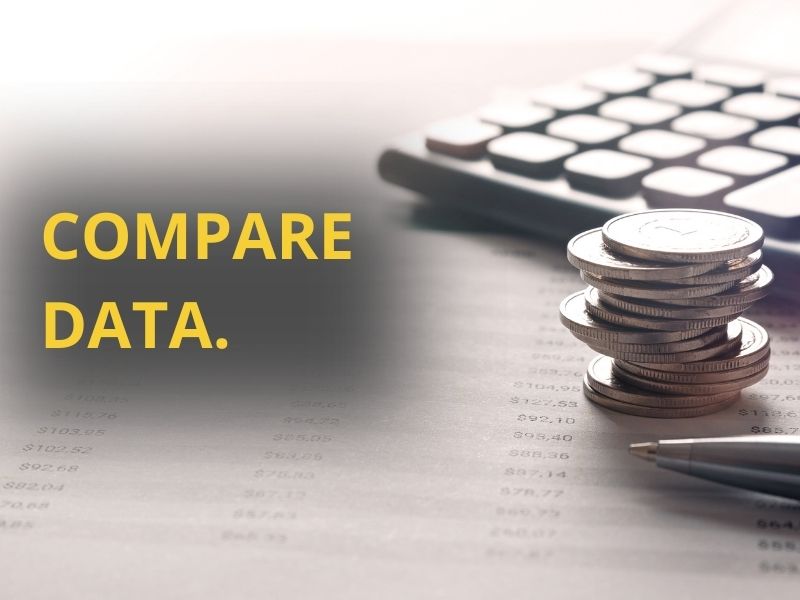Why a Personal Finance Spreadsheet Can Change Your Financial Life
Managing personal finances can often feel overwhelming—especially when you have multiple income sources, bills, and financial goals. Many people rely solely on mobile banking apps or mental notes, but these methods can lead to overspending, missed bills, or incomplete savings plans.
A personal finance spreadsheet offers a simple yet powerful solution to keep your money in check. By organizing your financial data in one place, you can gain clarity, track progress, and make informed decisions about your money. Best of all, you don’t need to be a math wizard—only a bit of consistency and the right setup.
Why Use a Personal Finance Spreadsheet Instead of Just an App?
While budgeting apps can be convenient, they often limit customization. A spreadsheet, on the other hand, allows you to:
- Tailor your categories to match your exact lifestyle.
- Analyze trends with custom formulas and charts.
- Track long-term goals beyond just monthly budgets.
- Avoid subscription fees many apps charge.
In essence, a personal finance spreadsheet gives you full control over your financial tracking.
Step 1: Choose the Right Spreadsheet Tool
You can create your personal finance spreadsheet using:
- Microsoft Excel – Highly customizable with advanced features.
- Google Sheets – Free, cloud-based, and easy to share or access from anywhere.
- LibreOffice Calc – A free desktop alternative to Excel.
If you’re new to spreadsheets, Google Sheets is a great starting point because it’s beginner-friendly and accessible on all devices.
Step 2: Set Up the Structure of Your Spreadsheet
Your spreadsheet should be clear, easy to navigate, and tailored to your needs. Here’s a basic structure:
Main Tabs to Include:
- Income Tracker – All sources of money coming in.
- Expense Tracker – Fixed and variable costs.
- Savings & Investments – Contributions toward financial goals.
- Debt Repayment – Amounts owed, interest rates, and payment progress.
Essential Columns to Include in Each Tab:
- Date – When the transaction happened.
- Category – Salary, rent, groceries, etc.
- Description – Details of the transaction.
- Amount – How much was spent or earned.
- Balance – Running total after each transaction.
Step 3: Categorize Your Income and Expenses
A personal finance spreadsheet is only as good as its categories. Too many categories can cause confusion, while too few can hide important spending patterns.
Income Categories:
- Salary
- Side Hustles
- Investments
- Bonuses
Expense Categories:
- Housing (rent/mortgage, utilities)
- Transportation (fuel, public transport)
- Food (groceries, dining out)
- Health (insurance, medical bills)
- Entertainment
- Debt Payments
- Savings & Investments
By tracking categories consistently, you can quickly identify where most of your money goes.
Step 4: Use Formulas to Automate Calculations
Formulas make your personal finance spreadsheet far more efficient. A few useful examples:
- SUM() – Add up totals automatically.
- AVERAGE() – Find your average spending in a category.
- IF() – Set up alerts when spending exceeds a budget limit.
- Percentage formulas – See how much of your income goes toward each expense category.
Excel’s formulas can automatically calculate totals and balances for you. For example:
Formula to calculate remaining balance:=SUM(Income) - SUM(Expenses)
Example in practice:
If your total Income is $3,000 and your total Expenses are $2,200, the formula would look like this:=3000 - 2200 → Result: $800 remaining
This way, you can instantly see how much money you have left after covering all expenses.

Step 5: Track Monthly and Yearly Trends
Don’t just record numbers—analyze them.
At the end of each month, review:
- Which categories you overspent in.
- Whether your savings rate improved.
- If debt balances are decreasing.
Consider adding a yearly summary tab to compare data across months. This helps you see seasonal spending habits and long-term trends.
See more: Emotional Financial Decisions: How to Avoid Impulse Buying and Make Smarter Money Choices.
Step 6: Add Visuals for Better Understanding
Charts and graphs make it easier to see patterns at a glance.
You can create:
- Pie charts for expense breakdowns.
- Bar graphs for monthly income vs. expenses.
- Line charts to track savings growth over time.
Visuals help turn raw data into actionable insights.
Step 7: Keep It Updated Consistently
The biggest mistake people make with a personal finance spreadsheet is starting strong but abandoning it after a few weeks.
Here’s how to avoid that:
- Update your spreadsheet at least once a week.
- Set a reminder on your phone or calendar.
- Make it part of your routine—like checking social media or reading the news.
Step 8: Use It for Goal Setting
A personal finance spreadsheet isn’t just about tracking—it’s about planning.
You can set goals like:
- Saving for an emergency fund.
- Paying off a credit card in 12 months.
- Investing a fixed amount each month.
By adding goal progress columns, you can visually track how close you are to achieving them.
Step 9: Protect Your Data
Your spreadsheet contains sensitive financial information.
To keep it safe:
- Use a strong password for your file or Google account.
- Avoid storing it on shared devices.
- Consider creating backup copies regularly.
Common Mistakes to Avoid
Even the best spreadsheet won’t work if you make these mistakes:
- Forgetting to log small transactions.
- Mixing personal and business expenses in the same sheet.
- Overcomplicating the layout with too many unnecessary features.
- Ignoring the data instead of acting on it.
Benefits You’ll Notice After a Few Months
If you maintain your personal finance spreadsheet consistently, you’ll likely see:
- Less stress about money.
- Better control over spending habits.
- Faster progress toward financial goals.
- More confidence in financial decision-making.
See more: Understanding Investment Risk: A Smart Investor’s Guide to Managing Uncertainty.
Conclusion: Small Effort, Big Financial Rewards
A personal finance spreadsheet might seem like a simple tool, but its impact can be life-changing. By organizing your income, expenses, savings, and debts in one place, you create a clear financial picture—something many people never have.
With just a few minutes each week, you can make smarter choices, avoid financial surprises, and work steadily toward your goals. Consistency is key, and your spreadsheet will reward you with clarity and peace of mind.
FAQ – Managing Personal Finances with Spreadsheets.
Why should I use a spreadsheet for personal finance?
Spreadsheets are customizable, free, and provide full control over your financial data. They help track income, expenses, savings, debt, and goals — all in one place.
What’s the best spreadsheet program for budgeting?
Google Sheets is a great free option with online access and easy sharing. Microsoft Excel offers more advanced features, while Apple Numbers is ideal for Mac users.
What should a personal finance spreadsheet include?
Include sections for income, expenses, budget vs. actual, savings, debt repayment, financial goals, and a net worth summary for a complete financial overview.
Are there free spreadsheet templates for budgeting?
Yes. Google Sheets, Vertex42.com, Microsoft Office, and Tiller Money offer free and customizable templates to help you get started quickly.
How often should I update my spreadsheet?
Aim for a weekly check-in to track expenses and a monthly review to adjust your budget, update goals, and monitor progress toward financial milestones.

